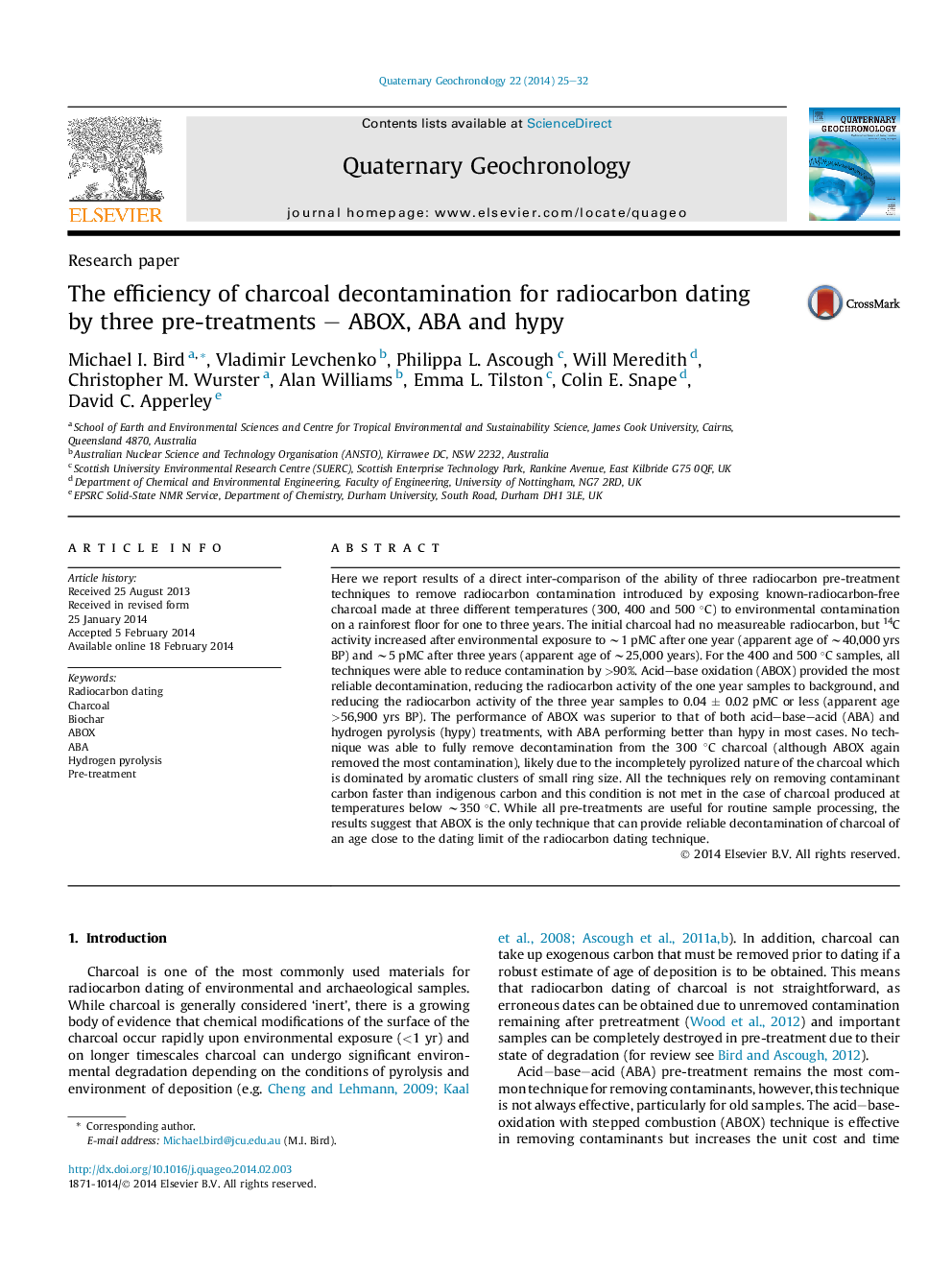| کد مقاله | کد نشریه | سال انتشار | مقاله انگلیسی | نسخه تمام متن |
|---|---|---|---|---|
| 4724957 | 1639854 | 2014 | 8 صفحه PDF | دانلود رایگان |

• Charcoal made from 14C-free wood and exposed to natural contamination on soil surface.
• After 1–3 years in tropical forest, 14C activity increased from zero to 1–5 pMC.
• ABOX (acid–base-oxidation) pretreatment was effective in removing contamination.
• ABA (acid–base–acid) and Hypy (hydrogen pyrolysis) were not as effective.
• No pre-treatment performed well on poorly-pyrolysed charcoal made at 300 °C.
Here we report results of a direct inter-comparison of the ability of three radiocarbon pre-treatment techniques to remove radiocarbon contamination introduced by exposing known-radiocarbon-free charcoal made at three different temperatures (300, 400 and 500 °C) to environmental contamination on a rainforest floor for one to three years. The initial charcoal had no measureable radiocarbon, but 14C activity increased after environmental exposure to ∼1 pMC after one year (apparent age of ∼40,000 yrs BP) and ∼5 pMC after three years (apparent age of ∼25,000 years). For the 400 and 500 °C samples, all techniques were able to reduce contamination by >90%. Acid–base oxidation (ABOX) provided the most reliable decontamination, reducing the radiocarbon activity of the one year samples to background, and reducing the radiocarbon activity of the three year samples to 0.04 ± 0.02 pMC or less (apparent age >56,900 yrs BP). The performance of ABOX was superior to that of both acid–base–acid (ABA) and hydrogen pyrolysis (hypy) treatments, with ABA performing better than hypy in most cases. No technique was able to fully remove decontamination from the 300 °C charcoal (although ABOX again removed the most contamination), likely due to the incompletely pyrolized nature of the charcoal which is dominated by aromatic clusters of small ring size. All the techniques rely on removing contaminant carbon faster than indigenous carbon and this condition is not met in the case of charcoal produced at temperatures below ∼350 °C. While all pre-treatments are useful for routine sample processing, the results suggest that ABOX is the only technique that can provide reliable decontamination of charcoal of an age close to the dating limit of the radiocarbon dating technique.
Journal: Quaternary Geochronology - Volume 22, August 2014, Pages 25–32